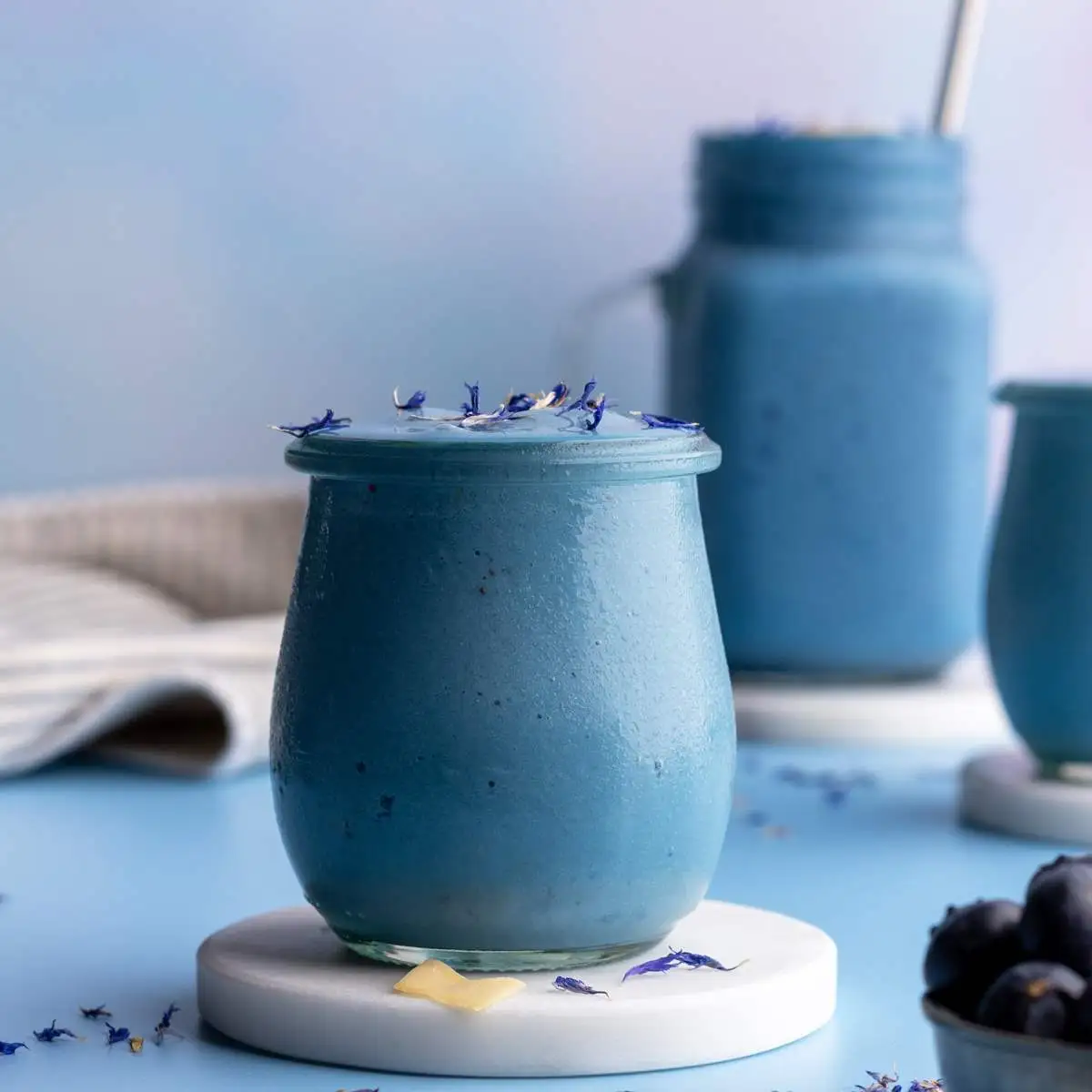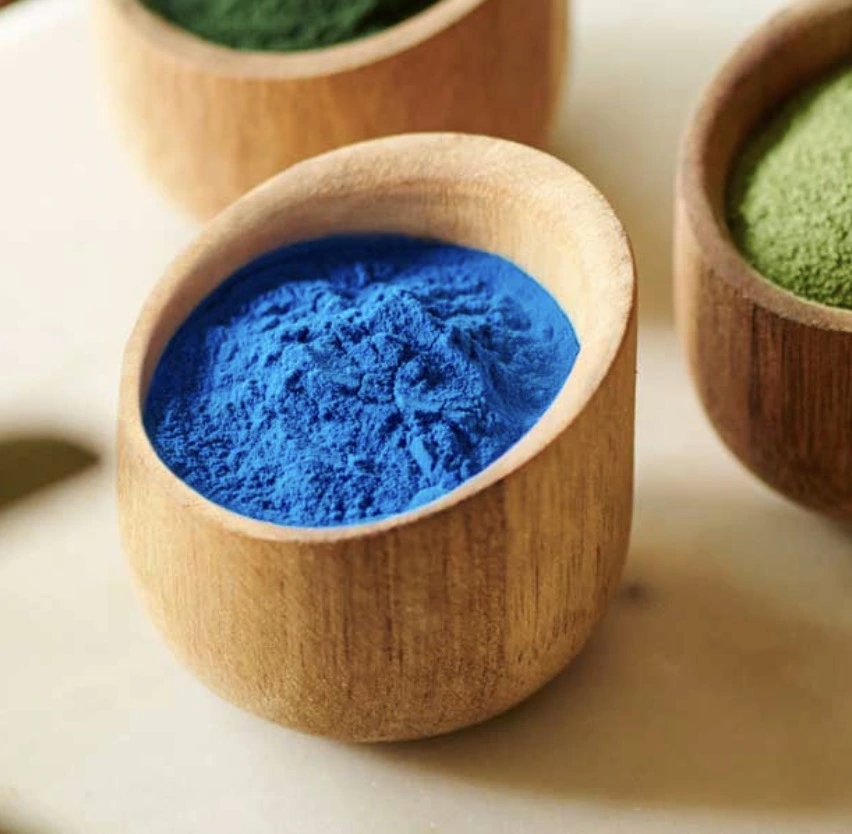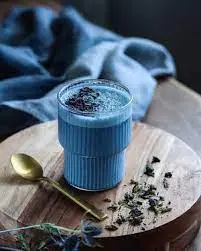Can kids have blue spirulina powder?
Blue spirulina powder has gained popularity as a natural supplement and food coloring agent. As parents become more health-conscious, many wonder if this vibrant blue superfood is suitable for their children. In this comprehensive guide, we'll explore the safety, usage, and potential benefits of blue spirulina powder bulk for kids.
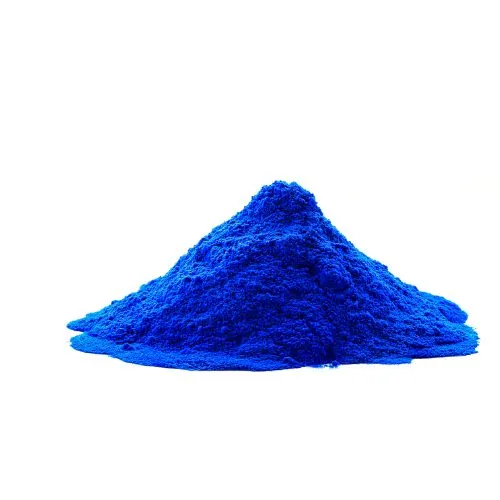
Is Blue Spirulina Safe for Children's Health?
When it comes to introducing any new supplement to a child's diet, safety is paramount. Let's delve into the safety aspects of blue spirulina powder for children.
Understanding Blue Spirulina's Composition
Blue spirulina, sourced from the blue-green algae Arthrospira platensis, is a concentrated extract of phycocyanin—the pigment that gives spirulina its vibrant blue hue. Known for its high antioxidant content and anti-inflammatory benefits, blue spirulina is gaining popularity among health-conscious parents. This natural supplement supports overall wellness and adds a striking color to foods and drinks without artificial dyes. Its nutritional profile and visual appeal make it a preferred choice for enhancing both health and presentation.
Safety Profile of Blue Spirulina for Kids
Blue spirulina powder in bulk is generally considered safe for most individuals, including children, when used in appropriate amounts. However, research specifically targeting its effects on children remains limited. Because every child’s health needs are different, it's important to consult a pediatrician before introducing blue spirulina into their diet. This ensures safety and suitability based on individual health conditions. Like any supplement, professional guidance helps avoid potential side
effects and ensures it's used in the most beneficial way.
Potential Allergies and Sensitivities
Although uncommon, some children may experience allergies or sensitivities to blue spirulina. Symptoms of a reaction can include skin rashes, itching, nausea, or other digestive issues. It's important to monitor your child after introducing any new supplement. If you observe any unusual or adverse symptoms following blue spirulina consumption, stop using it right away and consult a healthcare professional. Prompt attention ensures your child’s safety and helps determine whether the supplement is appropriate for their individual needs.
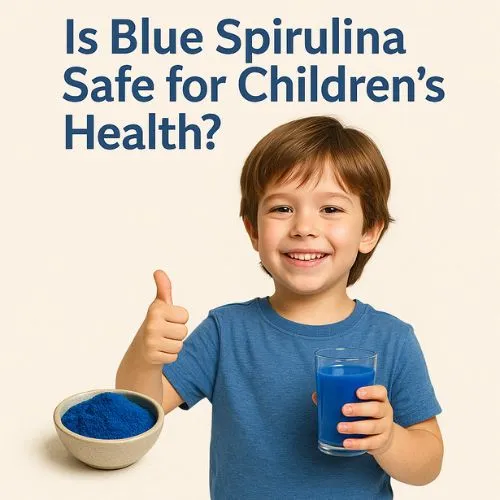
How to Use Blue Spirulina in Kids' Food Products?
Incorporating blue spirulina into your child's diet can be both fun and nutritious. Here are some creative ways to use this vibrant powder in kid-friendly foods.
Blue Spirulina Smoothies for Kids
Smoothies offer a fun and easy way to introduce blue spirulina to children. Its subtle flavor pairs well with sweet fruits such as bananas, mangoes, or pineapples, making it nearly undetectable in taste. Begin with a small amount—around 1/4 teaspoon per serving—and adjust as needed over time. The vibrant blue or turquoise hue it creates can be especially enticing for kids, turning a simple drink into a colorful, nutrient-packed treat they’ll be excited to enjoy.
Blue Spirulina in Baked Goods
Add a playful touch to baked goods by mixing a small amount of blue spirulina powder into pancake batter, muffin mix, or cookie dough. This not only gives your treats a vibrant blue hue but also adds a nutritional boost. Because blue spirulina is highly concentrated, start with just 1/8 to 1/4 teaspoon per batch. It’s an easy way to make baking more fun while sneaking in extra nutrients—perfect for parents looking to blend health with creativity.
Creative Blue Spirulina Snacks
Have fun with blue spirulina by using it to create vibrant, kid-friendly snacks. Add a small amount to homemade popsicles, swirl it into yogurt parfaits, or mix it with cream cheese for a strikingly colored spread. These bright, visually appealing treats can make healthy eating more engaging and enjoyable for children. With just a touch of blue spirulina, everyday snacks become colorful, nutritious delights that spark curiosity and encourage kids to try wholesome ingredients in a playful way.
Blue Spirulina Benefits for Growing Kids
While blue spirulina is often used for its color, it also offers potential health benefits for children. Let's explore some of these benefits.
Antioxidant Properties
Blue spirulina is packed with antioxidants, especially phycocyanin, which helps protect cells from damage caused by free radicals. For growing children, these antioxidants may offer support for overall health and development. While the potential benefits are promising, it's important to recognize that research on the long-term effects of blue spirulina supplementation in children is still limited. As with any supplement, it’s best to approach with care and consult a healthcare provider before making it a regular part of a child’s diet.
Potential Immune System Support
Some research indicates that spirulina may offer immune-boosting benefits. Although most studies have focused on adults or lab models, the results suggest possible positive effects for children's immune health as well. However, these findings are still early, and more research is needed to confirm benefits in children. Regardless, a well-rounded diet and healthy lifestyle should remain the cornerstone of supporting a strong immune system, with supplements like spirulina considered as optional additions, not replacements.
Nutrient Boost
Blue spirulina, while more concentrated in phycocyanin than whole spirulina, still offers some nutritional benefits. It contains trace amounts of protein, vitamins, and minerals. Although it shouldn’t be considered a primary source of essential nutrients, it can complement a balanced diet when used appropriately. Its vivid color and added antioxidants make it a fun and beneficial addition to meals, especially when paired with a variety of other wholesome foods for overall nutritional support.
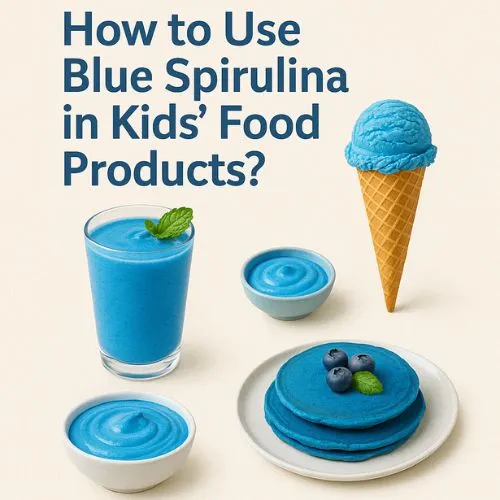
Conclusion
In conclusion, blue spirulina powder can be a safe and fun addition to children's diets when used appropriately. Its vibrant color and potential health benefits make it an intriguing option for health-conscious parents. However, as with any supplement, it's crucial to consult with a healthcare professional before incorporating blue spirulina into your child's routine. For high-quality blue spirulina powder manufacturer and expert advice on its use, feel free to contact us at info@yanggebiotech.com.
FAQ
Q: Can we get some samples to test before purchasing?
A: Of course, we can provide free samples of 20 to 100 grams, but the shipping cost is at the customer's expense. The shipping cost can be deducted from the next order, or the samples can be sent through your courier account.
Q: Do your products have relevant certifications?
A: Yes, our products are certified for HALAL, ISO, HACCP, Kosher, and other certifications.
Q: What is the minimum order quantity (MOQ)?
A: Small batches of samples can be customized according to your requirements.
Q: Do you offer OEM and ODM services? Can the formula be customized based on our own?
A: Of course, we provide ODM and OEM services to many customers. Our product range includes softgels, capsules, tablets, sachets, granules, and private label services. Simply contact us and let us know your requirements. Our experienced R&D team can also develop new products with specific formulas.
Please contact us to design your own branded products.
Q: How do you handle quality complaints?
A: First, we have a comprehensive quality control SOP. We provide authoritative third-party inspection reports for almost all products before shipment to minimize the possibility of quality issues. Second, we have a comprehensive return and exchange procedure. If there is a genuine quality dispute, we will strictly follow the SOP.
Q: How do you ship? How long does delivery take?
A: For small orders, we typically use DHL, UPS, EMS, FedEx, or TNT. Delivery typically takes 3-7 days. We also offer air and sea freight services. We have a strong freight forwarding team and can provide you with a one-stop service, including DDP and DDU.
Q: What are your payment terms?
A: 100% prepayment, payable by T/T, Western Union, MoneyGram, or PayPal.
Q: What is the shelf life of your products?
A: 2 years with proper storage.
Q: Is the packaging environmentally friendly?
A: We attach great importance to environmental protection and are constantly improving our product packaging. Some products are packaged in recyclable paper. Packaging materials are carefully selected to ensure product safety during transportation and storage, and to minimize environmental impact. We are committed to achieving a balance between environmental friendliness and practicality in our product packaging, and to contributing to sustainable development.
References
1. Johnson, M., & Smith, K. (2022). Nutritional Benefits of Spirulina in Pediatric Diets. Journal of Pediatric Nutrition, 15(3), 245-258.
2. Rodriguez, A. et al. (2021). Safety Assessment of Blue Spirulina Extract in Food Products. Food and Chemical Toxicology, 147, 111846.
3. Chen, L., & Wong, H. (2020). Antioxidant Properties of Phycocyanin from Spirulina: A Review. Antioxidants, 9(3), 248.
4. Thompson, S. et al. (2023). Creative Applications of Natural Food Colorants in Children's Cuisine. International Journal of Food Science and Technology, 58(4), 1672-1685.
5. Gonzalez, R., & Martinez, E. (2021). Potential Immune-Enhancing Effects of Spirulina: Current Evidence and Future Directions. Nutrients, 13(3), 766.
Based on your location and order quantity, you will have the opportunity to receive a limited time free shipping promotion!
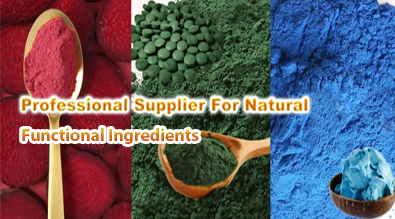
Who we are
